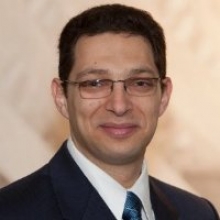CEE Seminar: Failure Investigation Analysis - Minnesota I-35 Bridge Collapse

Senior Staff Engineer
Simpson Gumpertz & Heger, Inc.
Newport Beach, CA
Abstract: High fidelity finite element analyses can be used to support engineering failure analyses. An after-the-fact failure sequence investigation to establish responsibility if proper evidence can be collected is highly deterministic.
A case-study deterministic failure analysis is the forensic investigation of the I-35 Bridge collapse in Minneapolis in August 2007. The collapse killed 13 people and injured over 100. The subsequent NTSB investigation cited undersized gusset plates as the primary reason for the collapse. This prevailing theory of collapse, while plausible, did not adequately explain the asymmetric collapse pattern. However, finite element simulation of the coupled thermal-mechanical loading under field conditions and best-estimate account for day-of loads indicate that collapse starts due to buckling in the bottom chord near the bridge pier, which leads to collapse of the statically determinant truss. For instance, evidence showed that an additional 20 percent weight had been added to the bridge deck over the years. Additional construction loads were stockpiled on the bridge by a pavement contractor, and thermal expansion of the bridge was restrained due to corroded bearings and bridge deck pavement progressive growth over the years. Thermal restraint relieves the demands on the suspect gusset plates and increases them elsewhere in the bridge. The simulated collapse pattern and progression produce a good match to the video and photo evidence from the actual event.
Bio: Mohamed Talaat is a senior staff engineer at Simpson Gumpertz & Heger Inc in Newport Beach, CA. He holds a Ph.D. in structural engineering and mechanics and an M.A. in probability and statistics from UC Berkeley. Talaat has worked for over 10 years on performance-based earthquake engineering of civil structures and probabilistic seismic risk assessment of nuclear power plants. He is active in applied research and development tools and methodologies for seismic safety engineering applications. Talaat is an adjunct assistant professor at Cairo University, Egypt, and served as a visiting lecturer at UC Berkeley in 2009 and 2011.
Share
Download
Upcoming Events
-
MAE 298 SEMINAR: Technology Developments for FIR Bolometric Detector Focal Plane Assemblies
-
CBE 298 Seminar: The Wisdom of the Crowd: Watching Bacterial Collectives (Re)shape Themselves
-
CEE Seminar: BIM and the Digital Twin
-
MSE Special Seminar: Revolutionizing Battery Technology - Engineering Quantum Materials for Enhanced Safety and Performance in Solid Electrolytes
-
MSE Special Seminar: Designing Sustainable Soft Matter from the Molecule Up
